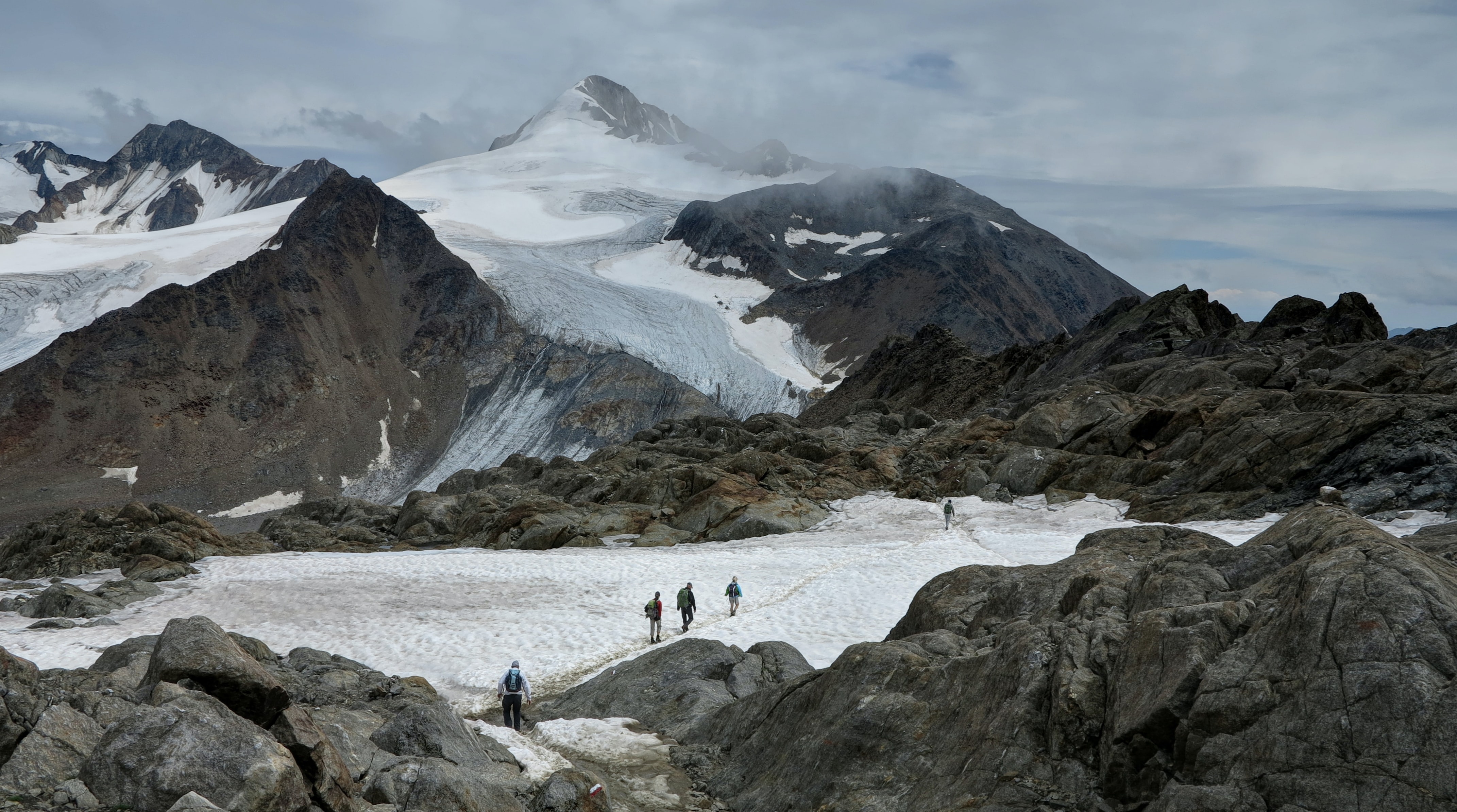Media release
From:
MEDIA RELEASE
Fri, 19 March 2021
Ancient footprints of Southern Alps glaciers track past climate changes
Detailed analysis of Southern Alps glacier landforms has produced a record of climate changes going back tens of thousands of years. The results give new insights into the natural functioning of the climate system, according to a new study co-authored by GNS Science.
An international research team led by the University of Maine has found that massive recession of Southern Alps glaciers occurred about 18,000 years ago due to major climate warming. Similar warming also shrank glaciers in South America and in some Northern Hemisphere mountain ranges.
Photo of moraine belts deposited at the margin of the ice-age glacier that once filled the Lake Pukaki valley near Aoraki/Mt Cook (high peak right of centre). The ridges running into the distance along the valley side are like rings in a bathtub, formed at the edge of the now-vanished glacier, at different times in the past. Scientists can estimate how cold the climate had to be to make the glacier that large, and with accurate dating of each moraine ridge, can work out when that was.
Long-term oscillations in the Earth’s orbit alter the seasonal distribution and intensity of solar energy received by the Earth. The Milankovitch Theory holds that natural global climate cycles are driven by orbital oscillations that control the extent of ice sheets in the Northern Hemisphere.
The team’s article, published in Quaternary Science Reviews, proposes a new hypothesis: that the main effect of Earth’s orbital oscillations is on the latitude and strength of the Southern Hemisphere westerly wind belt.
The westerly winds sweep around the Southern Hemisphere. Their position relative to the southern edges of the continental platforms of South Africa and Australasia influences the behaviour of major ocean currents.
The hypothesis is named after the Earth’s eighth continent, Te Riu-a-Māui / Zealandia. The crest of this largely submerged continental platform is the land mass of Aotearoa New Zealand.
“The Zealandia Switch hypothesis highlights New Zealand’s position in the middle of a critical crossroads between ocean currents and climate," says David Barrell from GNS Science.
“In particular, the position of the westerlies in relation to Te Riu-a-Māui / Zealandia determines the way water moves between the warm Pacific Ocean and the cold Southern Ocean.
“Our modelling shows that changes in the southern westerly winds have far-reaching consequences for global climate.
“During the last glaciation, the westerlies were farther north and weaker. This lessened atmospheric convection in the tropical Pacific and reduced the production of moisture and transfer of heat into both hemispheres. It made the globe cooler.
“At the end of the last glaciation, the westerlies shifted south and strengthened. This stirred up the ocean and generated more convection, moisture and warmer temperatures.”
According to the research team, the Zealandia Switch mechanism may help to explain ice-age climate cycles. It may also account for shorter-term climate oscillations that have popularly been attributed to a ‘bipolar seesaw’ climate process.
David Barrell says this new hypothesis is “science in action, working as it should” – and encourages other scientists to begin testing the hypothesis and try to nullify it.
“An important part of science is to keep re-checking the underlying assumptions. We are questioning some widely-accepted views of the natural operation of the climate system, and we hope to spur researchers to re-examine their data in the context of our hypothesis.
“If the hypothesis stands up to scrutiny, it will give us better understanding of what drove prehistoric climate shifts. That may help improve the forecasting of human-induced climate change.”
ENDS



 New Zealand; International
New Zealand; International



